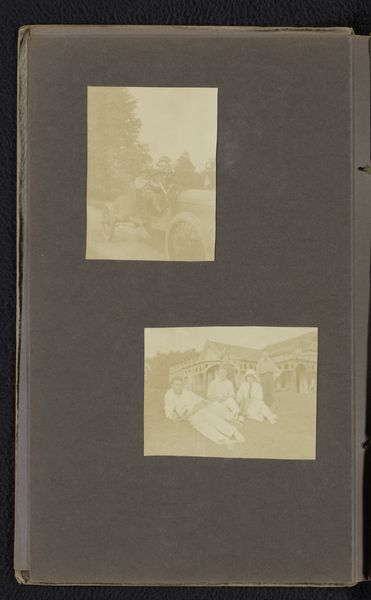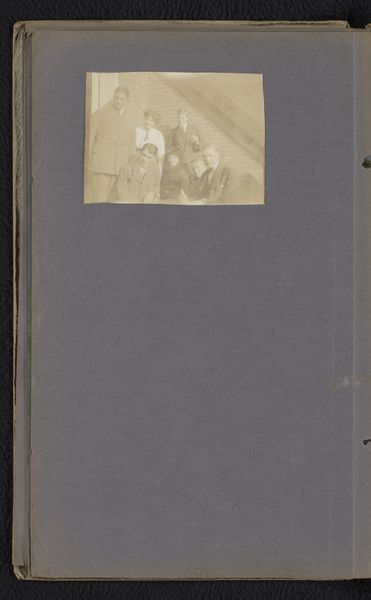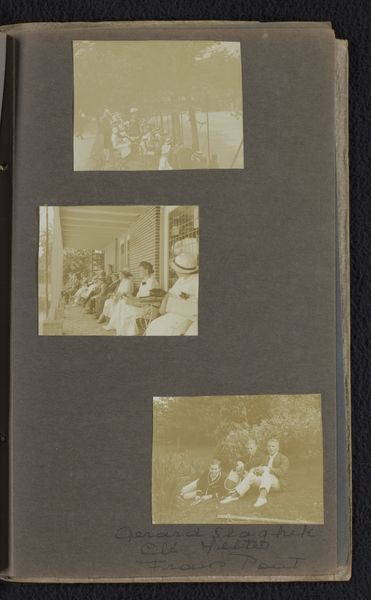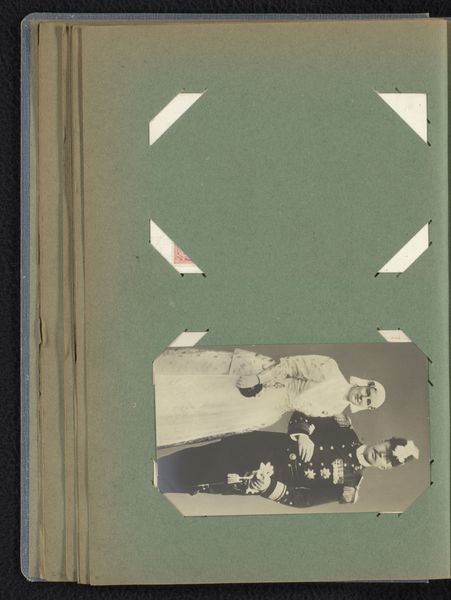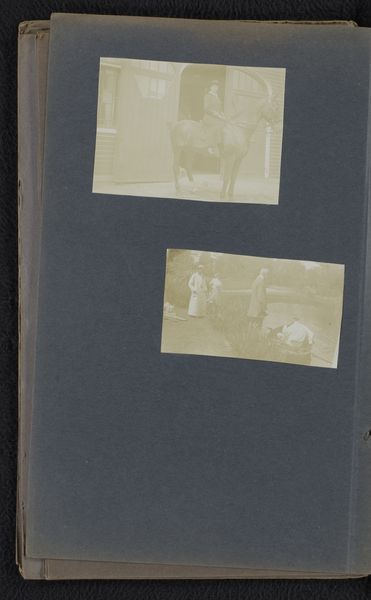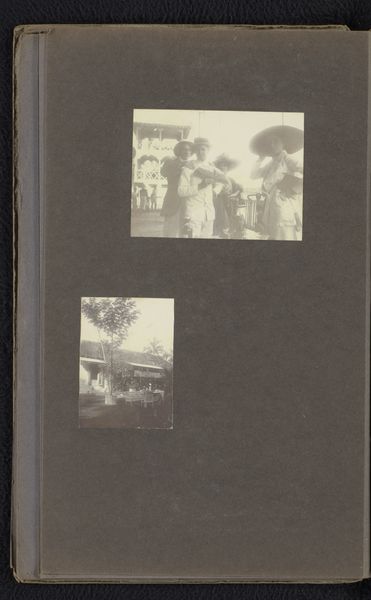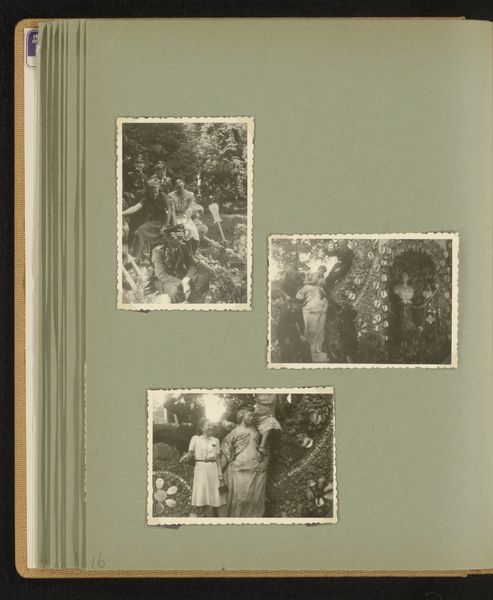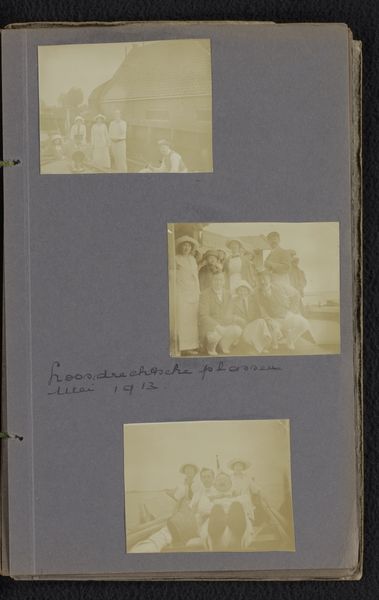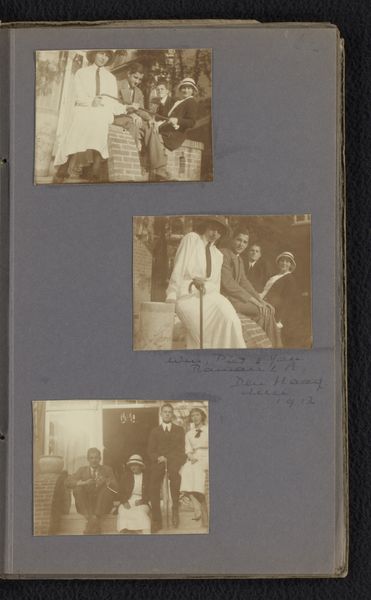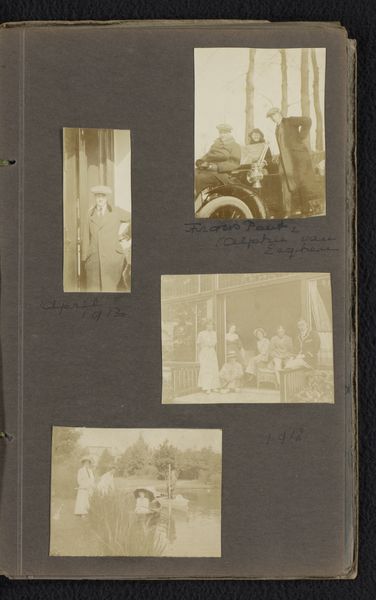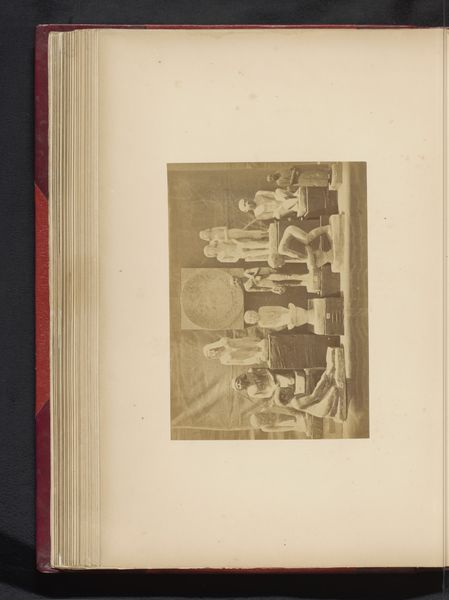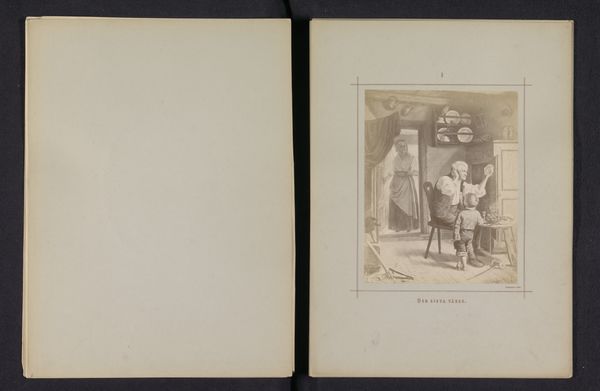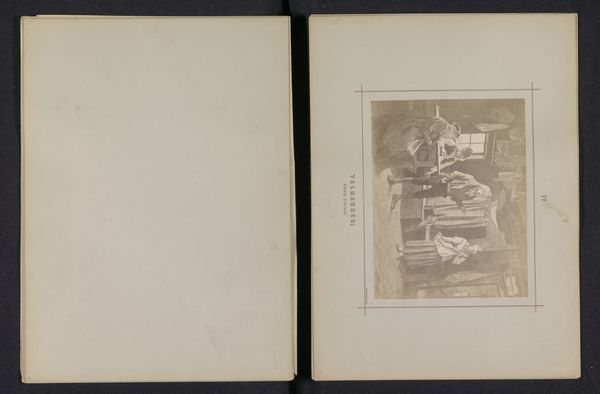
photography
#
portrait
#
pictorialism
#
photography
#
group-portraits
#
park
Dimensions: height 330 mm, width 210 mm
Copyright: Rijks Museum: Open Domain
Curator: Here we have "Vrienden van Loentje Onnen in een park," or "Friends of Loentje Onnen in a Park," a photographic work from 1912-1913 by Carolina (Loentje) Frederika Onnen. It depicts, well, friends in a park setting, a slice of Edwardian life caught in a pictorialist style. Editor: It feels like looking at a memory. The hazy quality, almost like it's been pressed between the pages of a book. And the sepia tones create an immediate sense of distance. Curator: Precisely. Onnen worked in a period where photography was grappling with its status as art. Pictorialism, as you mentioned, embraced soft focus and painterly effects. It sought to elevate photography beyond mere documentation and situate it among more respected art forms, such as painting. Editor: You can really see it in the way she frames these figures; they're composed, staged. There’s almost an unacknowledged understanding that materials and labor are implicit, though they aren’t discussed outright. Consider the clothes; what did that labor look like to produce such garments for each sitter? Curator: A key theme here is the deliberate construction of bourgeois identity. Look at the fashions, the poses, the very leisure time enjoyed in the park. Photography was instrumental in disseminating and reinforcing social norms. The proliferation of photography during this period normalized a lot of societal roles. Editor: Absolutely, and notice the textures—the slightly rough surface of the print itself. This wasn’t mass-produced like photos of today. This feels intimate, made by hand. What was the environmental cost of producing this photograph? The paper? The chemicals? What about labor? Curator: The park serves as both a setting and a symbol. Parks in this era were carefully managed spaces designed for controlled social interaction, and this photograph presents an interesting depiction of those environments through this medium. The careful use of light and shadow contributes to its unique visual language. Editor: Considering how much photography democratized portraiture, bringing it to wider segments of society. This almost hints to modern media—social media for the early twentieth-century person. Curator: The composition also plays a significant role, drawing us into the subjects, even today. Photography offered a unique means to freeze a fleeting moment in time. This gives the portrait an interesting dimension. Editor: Yes, makes me curious of that era! This feels precious because it required material intervention; so different than endless digital snaps, that carry the burden of near-zero cost. Curator: I agree; thank you for helping look more closely at this photo. It gives pause and provokes important reflections on how much work went into a single capture. Editor: Certainly. This reminds me how an image's apparent simplicity often hides so much depth and history. It prompts thinking.
Comments
No comments
Be the first to comment and join the conversation on the ultimate creative platform.
